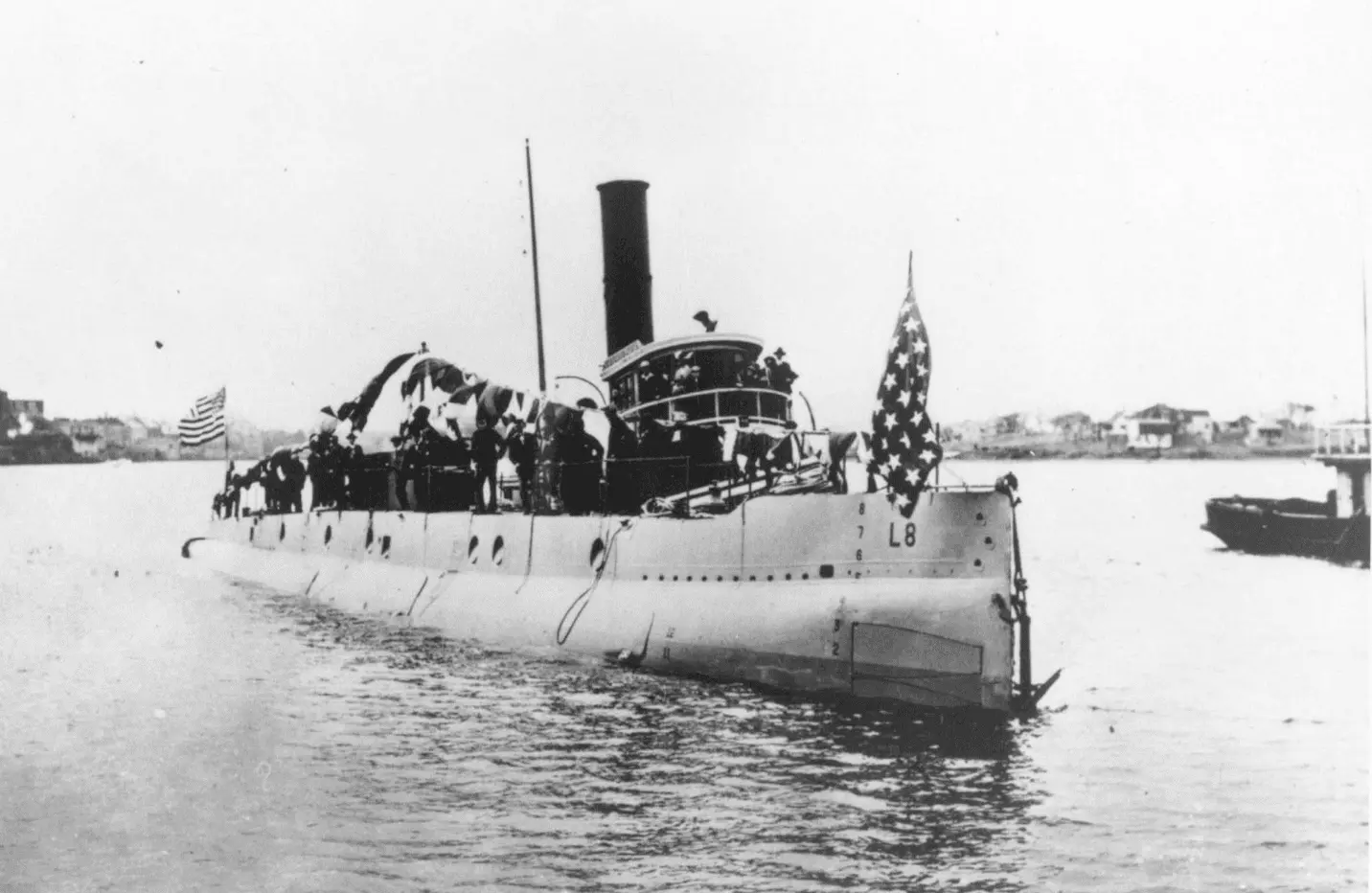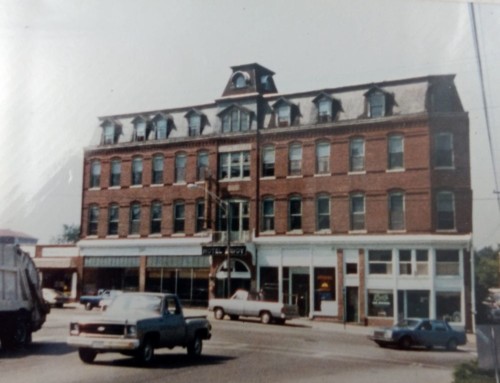Today’s nuclear submarines are the most destructive weapons systems ever devised by man. Today, one submarine packs more firepower than the entire ordinance expended in World War II. Their stealth, survivability, and ability to retaliate in the event of nuclear war make them a deterrent. How ironic that mankind has developed a weapon too terrible to use. The submarine will either destroy us or keep us from destroying ourselves. This story is about Simon Lake, a distinguished engineer and inventor, who played a major role in the development of the submarine.
When he was 12, Simon Lake read the book Twenty Thousand Leagues under the Sea, the story about a brilliant scientist and inventor whose character was flawed by the desire for revenge. In the book, the captain and undersea explorer was Jules Verne’s Captain Nemo and his submarine was the Nautilus. The story of Captain Nemo and his submarine inspired young Simon Lake’s imagination about exploring the undersea world. Years later Lake would build a submarine he named the Nautilus and realized much of Verne’s vision of exploring the undersea world.
In an effort to learn more about Lake’s contribution to the development of the modern submarine a group of experienced wreck divers, led by Captain Bill Palmer, traveled to a location off the coast of Rhode Island to the wreck of the L-8. The L-8 was the first submarine built by the United States Navy and was designed by Lake. Her keel was laid in 1915 at the Portsmouth Naval Shipyard and she was launched on April 23, 1917.
The L-8’s unique service during the WWI happened when she was paired with the four-masted schooner USS Charles Whittemore. The plan was to use the Whittemore as a decoy to lure German U-boats in and then the L-8 would attack and sink the U-boat. During the war patrol, the Whittemore towed the L-8 at a depth of 40 feet. Though the towing went surprisingly well other issues arose. Because the sub had to stay submerged 14 hours a day, coming up only after dark, it was incredibly tough on the sub’s crew.
Air onboard the sub was foul and the conditions were cramped. In addition, the sub’s radio wouldn’t work underwater so the L-8 had to surface frequently to learn what was happening on the surface. Prowling the U-boat infested waters, struggling against fatigue, weather, and primitive equipment the heroism of these men was admirable. The Whittemore and the L-8 did not encounter any enemy U-boats and two months later the war ended.

The wreck divers were eager to be heading toward this historic ship that had been lying on the seafloor for 93 years. I went along to photograph and write this story.
0800, aboard the Thunderfish: I peered into the grayness surrounding the flybridge of the boat as we headed out of the harbor. The boat is loaded with scuba tanks and equipment. Captain Bill Palmer turned to me and said, over the throb of the diesels, “You see anything out there?”
I looked into the gray shroud, “Nothing,” I replied. I hadn’t seen anything since we’d left the mouth of the Mystic River an hour ago.
“It’s shut down tighter than a frogs butt and that’s pretty tight,” Captain Bill replied. Palmer has a lot of colloquial expressions like that. He’s ex-army and tough as nails, yet with a wry sense of humor and an incredible knowledge of history. Captain Bill doesn’t just read history, or just like history, he lives for it. It’s his passion. When Captain Bill tells someone a story about some long-ago shipwreck it is as if he’d been there and maybe even gone down with the ship. He not only knows the details of the event but how it affected people.
Captain Bill is respected by the men who dive with him. He’s been exploring the deep seas for over half a century and although now in his sixties, with two knee replacements and half a lung from years of smoking cigars, he is still diving.

In 1894 Lake built his first experimental submarine, The Argonaut Jr. The submarine successfully demonstrated its underwater capabilities and its success led to the formation of the Lake Submarine Company of New Jersey. Later, Lake built a larger submarine, the Argonaut. It was the first submarine to operate successfully in the open sea and it garnered a congratulatory telegram from his childhood idol, Jules Verne.
Throughout his career, Lake is credited with the development of many technologies which are essential for the successful operation of submarines. He achieved over 1500 patents in his lifetime of which 200 were for the submarine. His inventions included even-keel hydroplanes, ballast tanks, divers’ compartment, periscope, twin-hull design, and many more. No modern submarine could operate today without using the advancements made by Lake and which were adopted worldwide by the early 1900s.
Lake went on to found the Lake Torpedo Boat Company in Bridgeport, Ct. while John Holland joined with Electric Battery which later became Electric Boat in Groton, Ct. While Holland worked on developing submarines for the Navy, Lake’s ideas for submarine design were aimed at peaceful commercial purposes such as cargo carriers and ocean explorers, not for war. Through unscrupulous means and political influence, Holland’s company was able to secure many lucrative Navy contracts even though Lake’s designs were superior. Lake was finally awarded a Navy contract and 26 submarines of his design, including the L-8, were built for the Navy.
Lake was honored many times throughout his career but canceled stocks and bonds are all that’s left of Lake’s Torpedo Boat Company. Rotted pilings mark the place in Bridgeport’s harbor where the large Lake Torpedo Boat Company shipyard once stood.
1000; on board the Thunderfish: 6 miles southeast of Point Judith: After an hour the engines slowed. “We should see it anytime if my co-ordinates are right,” Captain Bill said as he stared at the screen of the depth gage. A large shape slowly appeared. “There she is. She’s been laying there since 1926 when the Navy used her as a target to test a new magnetic torpedo.”
“That test was the first and only time the magnetic torpedo was tested prior to World War II.” Captain Bill explained, “One has to remember that if the Navy had kept up their experiments on the magnetic torpedo we might have lost fewer subs and ended the war with Japan sooner. Our subs had many problems with the magnetic torpedo at the start of the war and it wasn’t until the sub captains complained bitterly that the torpedo problem was finally solved.”
The L-8’s hull lies 110 feet down in some of the blackest water around. On a good day, the visibility on the bottom is only 6 to 8 feet. If things go according to plan, Captain Bill and three other divers will be able to enter the sub, explore, and videotape the interior. In part two we’ll explore the sub.











